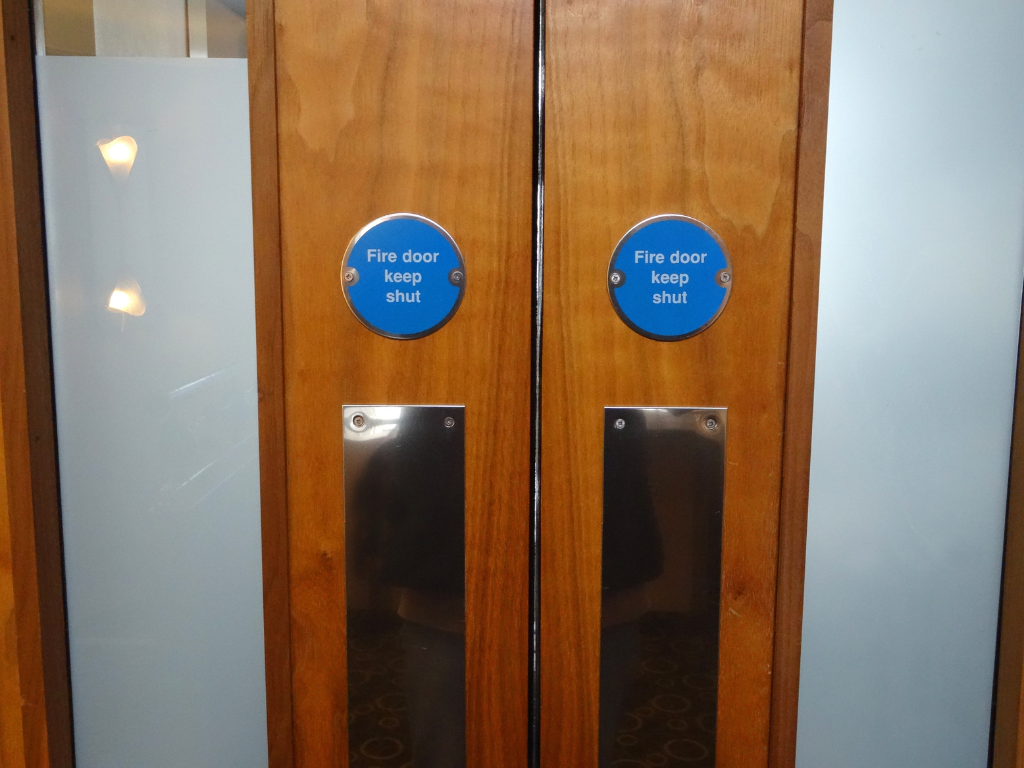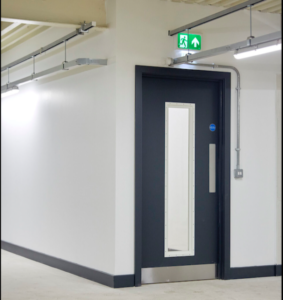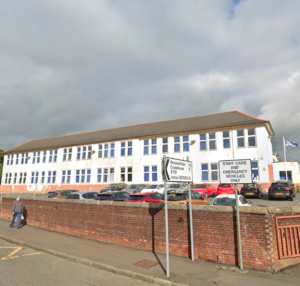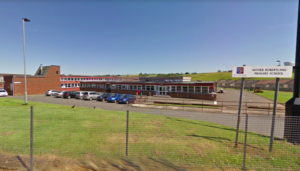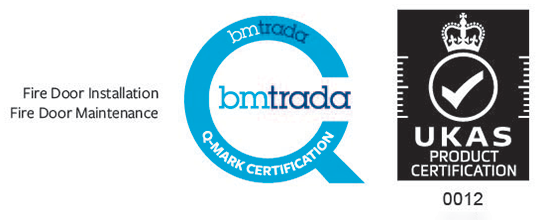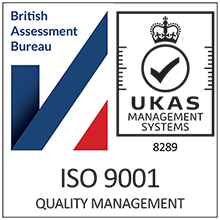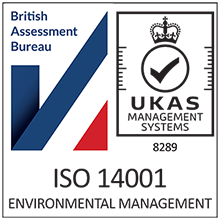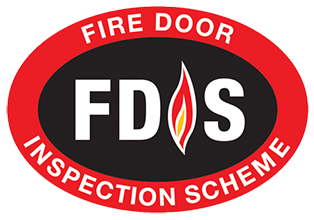Fire doors are one of the most overlooked parts of a building’s safety system, but when it comes to slowing down a blaze, they make a huge difference.
They’re not there for decoration. Their job is to hold back flames and smoke, protect escape routes, and buy time when every second counts. At TCS Response, we work with businesses all over Scotland to make sure their fire doors meet the right standards and actually do what they’re meant to do. Here’s a closer look at the basics—and why they matter.
What is a Fire Door?

A fire door is designed to slow the spread of fire, usually for 30 or 60 minutes. It gives people time to get out and lets fire crews do their job without everything going up in flames.
But it’s not just about the door itself. You’ve got the frame, hinges, seals, handles, and the closing mechanism—every part matters. These doors are tested as a complete unit, and swapping out parts with the wrong spec can seriously reduce how well it works in a fire.
And fire doors need to be looked after. Over time, small things like loose hinges or worn seals can stop the door from working properly. Even a tiny gap can make a big difference. That’s why routine inspections aren’t just a box-ticking exercise. They’re essential to meet current fire door regulations.
Not all fire doors look the same either. Some are plain, others have glass panels or are designed to blend in. What matters is that they’re certified, fitted properly, and that they’ve been tested to meet British or European fire safety standards.
What’s the Purpose of a Fire Door?
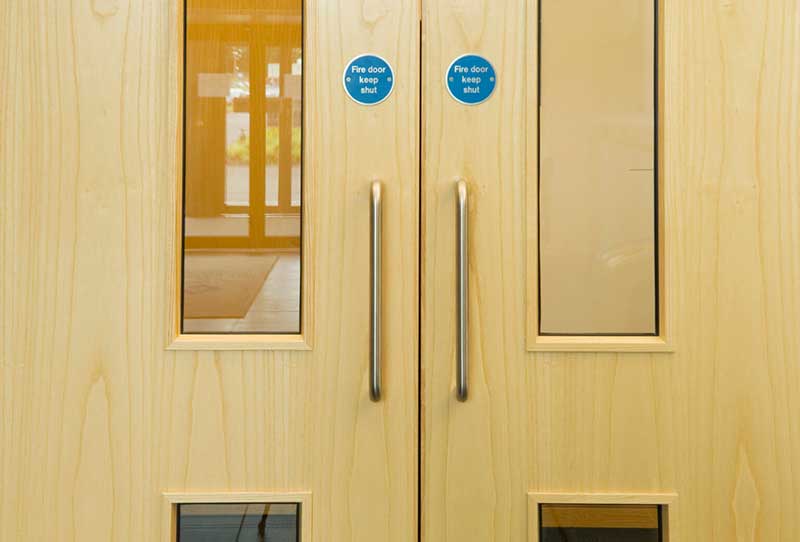
It’s simple. They slow fire down.
Fire doors are there to create barriers inside a building, stopping fire and smoke from moving freely from one area to the next. By doing that, they help keep escape routes safe and give people a chance to get out before things get worse. It also means firefighters can move through the building more safely when every second matters.
Think about a stairwell, corridor, or shared office space. Without fire doors, flames can tear through those areas in no time. But with properly installed doors, the spread slows right down. That bit of extra time could be the difference between a smooth evacuation and a major disaster.
They’re also there to protect property. A fire that’s held in one part of the building is much easier to control than one that’s jumped across multiple floors. That can stop a bad situation from becoming a total loss—and limit the damage to parts of the building that might otherwise be untouched.
It’s not just about the fire itself either. Smoke can be just as dangerous. Fire doors with the right seals help stop toxic smoke from filling up escape routes, giving people cleaner air as they leave and reducing the chances of smoke inhalation.
So, while they might look like ordinary doors, fire doors are doing a very specific job—and a crucial one. They’re part of a building’s first line of defence when things go wrong.
What Are Fire Doors Made Of?

Most fire doors are built with a solid core—usually timber or a heavy-duty composite. That core is where the strength comes from. It’s made to hold firm when things heat up, even if flames are closing in around it.
Look at the edges and you’ll usually spot slim seals tucked into the grooves. These are intumescent strips. When they get hot, they expand and seal the gaps between the door and the frame. It’s a simple idea, but it works. That extra barrier stops smoke and fire slipping through where you can’t see it.
Some fire doors have glass panels too, but it’s not your standard window glass. This stuff is reinforced to hold out under intense heat without cracking or falling out. So you still get visibility and natural light, without losing protection.
The small parts matter just as much. Hinges, closers, handles, latches—they’ve all got to be rated for fire safety. If even one of those fails, the whole door might not hold. For example, a cheap hinge could bend or snap under pressure, and that’s the door gone. That’s why these doors are tested as complete units. You can’t swap out parts and expect the same results.
At the end of the day, a fire door is only as strong as its weakest piece. Everything needs to work as one. If just one bit fails, the door won’t do its job—and that’s when things go wrong fast.
How Do Fire Doors Work?

When there’s a fire, the door’s job is to hold everything back.
The core resists heat, the seals swell up to block gaps, and the frame holds steady. All of that keeps flames and smoke from moving into hallways, staircases, or other rooms.
The closer is just as important. It pulls the door shut after someone uses it. If the door’s left open, even by accident, it won’t help in an emergency. Some systems use hold-open devices that release and shut the door automatically when the fire alarm goes off, which keeps things accessible while still being safe.
How Can You Identify a Fire Door?

The easiest place to start is by looking at the top edge of the door. Most certified fire doors will have a small label or plug there. It might be printed or stamped into the wood, showing things like the fire rating and the certifying body. That little label tells you the door’s been properly tested and approved.
Another thing to check is the weight. Fire doors tend to feel heavier than a standard door because of the solid core inside. If you push it open and it feels more solid or slow to swing, that’s a decent clue.
You’ll also want to look along the edges. Fire doors usually have intumescent seals fitted into the grooves. They might be black, white, or graphite-coloured, and they run the full length of the door edge or frame. Some also include brush seals or rubber strips to block smoke. If they’re missing or damaged, the door might not be doing its job.
Signs can be another giveaway. You’ll often see “Fire Door Keep Shut” signs at eye level. That’s more than just a reminder—it’s there because the door needs to stay closed to be effective. If it’s propped open, or not closing properly, it’s not protecting anyone.
That said, not all fire doors are easy to spot. Some look almost identical to regular doors, especially if they’ve been painted to match the interior. In places like hotels, offices, or flats, you might walk past dozens without realising.If you’re not sure, don’t guess. A qualified fire door inspector will be able to check it over properly and spot issues you might miss. It’s a small step that could make a big difference when it really counts.
Why It Matters for Scottish Businesses

Fire safety rules aren’t optional. Business owners are legally responsible for making sure their buildings meet the right standards, and that includes fire doors.
Poorly fitted or faulty doors can put lives at risk and leave you open to legal action. In 2021, tougher sentences were announced for Scottish businesses who breach fire safety laws, after the Cameron House Hotel tradegy in December 2017. If you manage a property, this is one area you can’t afford to ignore.
Concerningly, a FDIS survey carried out back in 2021, found that 75% of fire doors failed to meet requirement standards.
Work With Scotland’s Fire Door Experts

At TCS Response, we know fire doors inside out. We handle installations, inspections, repairs, and certification across Scotland.
If you’re not sure your doors are up to scratch, we’re here to help. It’s not just about fitting doors. It’s about keeping people safe and making sure your business is protected.

